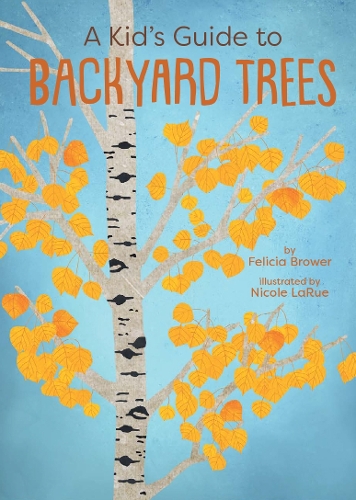
A Kids Guide to Backyard Trees
(Paperback)
Publishing Details
A Kids Guide to Backyard Trees
By (Author) Felicia Brower
Illustrated by Nicole LaRue
Gibbs M. Smith Inc
Gibbs M. Smith Inc
11th February 2025
United States
Classifications
Children
Non Fiction
Childrens / Teenage general interest: Ecosystems
Childrens / Teenage reference: Encyclopaedias, general reference
582.16
Physical Properties
Paperback
96
Width 127mm, Height 178mm
192g
Description
Packed with captivating facts about the most common trees in the United States and Canada, this brightly illustrated guide is perfect for young nature lovers.
Learn all about the towering trees around you in A Kids Guide to Backyard Trees a handy, easy-to-carry guidebook for explorers that shows you how to identify 40 trees that can be found in North America using their bark, leaves, flowers, fruits, and seeds. Discover the wild world of trees as you learn about their life cycles, unique features of different types of trees, and why protecting them is important for the planet. Check the glossary for tree-related terms you might not know, keep track of the trees youve seen in a handy log, and try out a fun DIY project that lets you practice identifying leaves at home.
With A Kids Guide to Backyard Trees, children can become expert nature explorers, no matter their age!
Also available:
- A Kids Guide to Backyard Bugs
- A Kids Guide to Backyard Birds
Reviews
A key to identifying 40 tree species found in the contiguous United States.
After an introduction that invites readers to a tree ID adventure, Brower, a Master Gardener, begins with a popular craft project: leaf rubbings. She then explains how to identify trees in language that the intended audience may find challenging; fundamental words are bold-faced and defined in the glossary. The author instructs readers to look closely at the leavestheir patterns, shapes, edges, and layoutand alsoat the bark. Then, using the table of contents as a two-part key, readers can find the group the leaves fall into (simple smooth, simple serrated, etc.) and look for the trees in that section. Spread by spread, what follows are entries on 40 tree species, from Eastern redbud to white fir. Each entry features an illustration, as well as the trees size and scientific name, a general description, a close-up of some of its parts, a map showing the part of the U.S. where the tree is native, the trees habitat and range, a fun fact, and info on its bark, leaves, flowers, and fruits. The trees include a majority of the most common in the lower 48 states, as well as the American chestnut, now sadly harder to find. Perhaps because the leaves, which are crucial to identification, arent always shown in detail, this offering feels a bit incomplete. Still,overallit will leave youngsters primed to look more carefully at trees, and readers of all ages will find plenty of sound information.
An attractive handbook for beginning nature enthusiasts. (Nonfiction. 8-12)
* Kirkus *This accessible field guide concentrates on visual elements like leaves, offering easy ways ofidentifying and differentiating types of trees. Most examples represent trees commonly found inthe Eastern, Southern, and Midwestern parts of the U.S., with only one spanning the entirecountry (smooth sumac) and just a few found out West (Douglas fir, lodgepole pine, ponderosapine, white fir). The 40 two-page spreads feature full-page drawings facing fact-filled, brief paragraphs identifying tree traits: products (nuts, sap, lumber), ecosystem support (pollination, homes and food for birds, insects, animals, and humans), a map indicating habitat and range,and sections on bark and leaves, fruits and seeds, and fun fact notes. The back cover touts thisas a portable guideperfect for your back pocket, school bag, or even the basket on your bike.Theres a log for recording various tree sightings, craft ideas, identification tips, a glossary, andsuggestions for tree conservation. Intended for personal use, this still offers plenty of basicinformation while sparking curiosity. -- Kathleen McBroom * Booklist *
Author Bio
Felicia Brower is a nature writer, living in beautiful Denver, Colorado. She specializes in gardening, home landscaping, low-water Colorado native plants, regionally-adapted seeds, sustainability, regenerative agriculture, permaculture practices, and travel.
Nicole LaRue, a graphic designer and illustrator, believes every personno matter their size, age, color, or statuscan help create positive social change. Called upon at the eleventh hour to create the official logo for the 2017 Womens March on Washington, she is no stranger to mighty work. Her clients include Chronicle Books, Abrams Books, Oxford University Press, Compendium Inc., Madison Park Greetings, Johnson & Johnson, Chat Books, Tiny Prints, DC Shoes, American Eagle, and more. See her work at www.smallmadegoods.com. Nicole resides in Salt Lake City, Utah.
